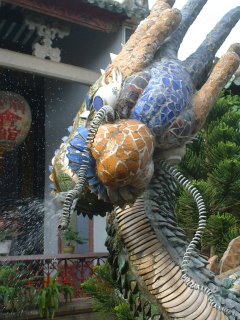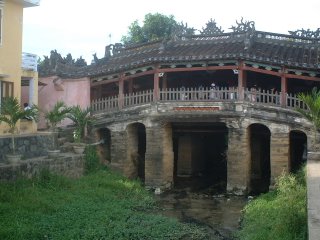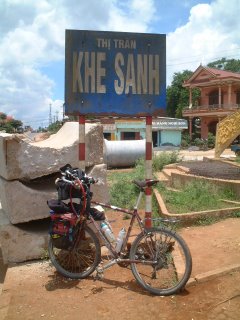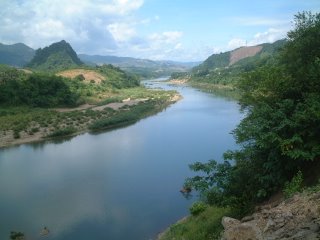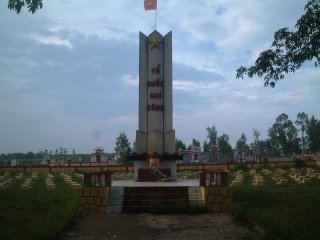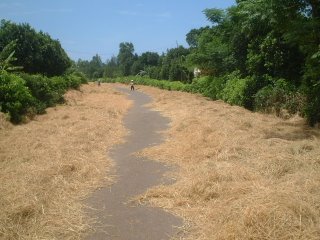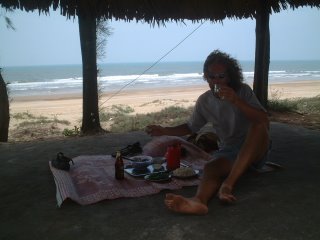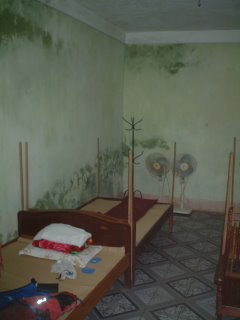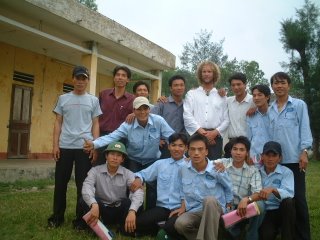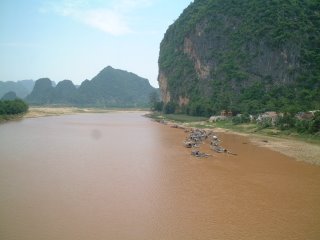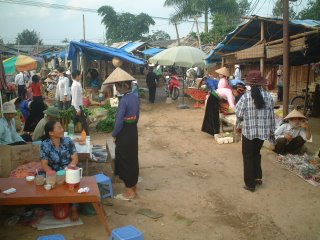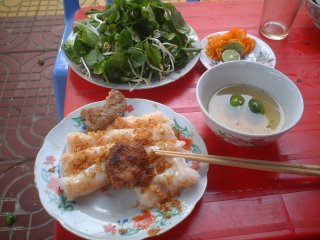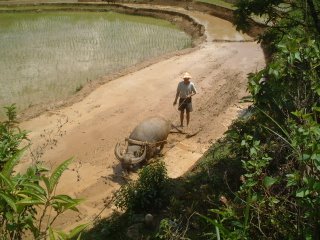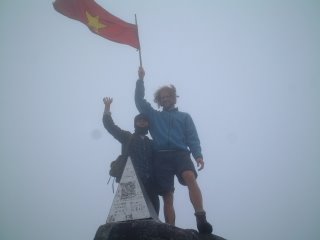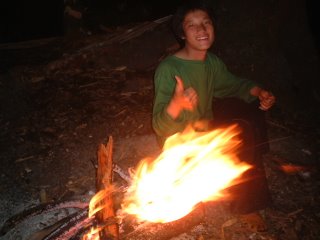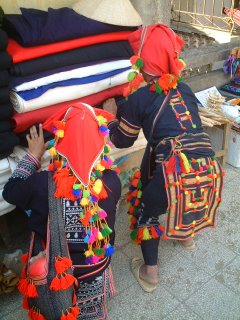Random Musings, Vignettes and Thoughts
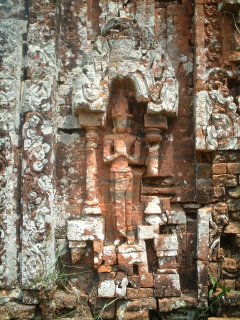


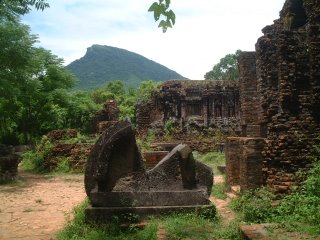
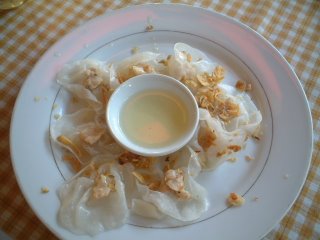
A few disconnected thoughts from the road, accumulated over the past few weeks.
Why is it that, as I've gotten further south, where it's hot all the time, it's become harder and harder to find cold beer and decent ice cream? Most places, I have to have ice cubes in my beer to make it drinkable, and ice cream is as scarce as hen's teeth. Don't people here find it as hot as I do?
On the other hand, with every kilometre further south I get, the more people know how to speak at least a little English. American influence lingering from the war? Or just more tourists around, so more commercial incentive to learn? Or just a more city-based, educated society, with better English teachers?
With more exposure to tourists, the South is also more of a place for getting ripped off. You can see it coming; the sly grin, the look of grasping avarice, the discussion amongst the locals about how much they're going to charge the foreigner. I hate it; the only antidote is to ask the price of absolutely everything and be prepared to walk away, to bargain and to reprimand.
I thought I'd seen every possible method of rowing a boat during my travels, but the other day I saw a completely new idea. A kid lay on his back in a rowboat with his feet tied or taped to the oars, and he pedalled his legs as though he were riding a bicycle, alternately dipping the oars in the water. Ingenious.
The recently-completed rice harvest featured some very impressive feats of transport: oxcarts piled high with rice stalks, farmers staggering under loads balanced over their shoulders on a length of bamboo, and my personal favourite, the harvest bicycle. Two wooden racks hang from the bottom of the bike frame and support enormous piles of rice stalks, completely enveloping the bike. The driver pushes the bike with the aid of two long poles, one attached to the seat post and the other to the handlebars. In the Dien Bien Phu war museum, they mentioned that these bikes were used by Ho Chi Minh's army to transport up to 200 kg (!?!) of supplies at a time. Something to think about the next time I curse my heavy luggage.
I pick up more and more fellow riders these days. They're always schoolkids trying to impress their friends, and they rarely last very long, but occasionally somebody stays with me for 4 or 5 kilometres. Very occasionally it's a bike with two kids on it; they take turns pedalling as fast as they can. It's nice to see them expending more energy than the average citizen of Vietnam.
I watch milestones on the highways religiously. Usually they give distances to the next town, or the next major city, or the one after that. Recently, though, the milestone painters have been getting adventurous; I went for 25 km without seeing one nearby town mentioned. Instead, I learned the distances to Saigon, Nha Trang and a host of other towns 1000+ km away. Good for general knowledge, but bad for trying to figure out how far it's going to be to a decent lunch stop. The last little while, though, it's been back to the nearby towns. I wonder if each province's milestone painters have autonomy over which distances they're going to give?
I love the various cycling styles that you see around the world. Here in Vietnam, they have a couple of methods of riding two to a bike that I've never seen elsewhere. My favourite is when one rider sits on the saddle and the second one sits on the luggage rack and they both pedal at the same time, the one at the front putting his feet on top of the other one's feet on the pedals. Often I see boys riding around alone on a bike but sitting on the luggage rack with the seat right in their chest, which can't be comfortable. I've seen three on a bike a few times, with the third person sitting backwards on the handlebars, quite a feat of balance. You also see people on motorcycles pushing (with their feet) or pulling (with their hands) friends on bicycles. I wonder why it is that, like in Japan and China, everyone rides around with tires that are almost flat, and seats that are much too low, with their knees sticking out sideways like Charlie Chaplin or Groucho Marx walking. Of course, the smallest kids can't really fit on the bikes, so they either ride through the frame, or on girl's bikes sitting right on the cross-bar which has got to hurt after a while.
I've now been offered 8 daughters to marry (everyone is in shock that I'm 37 and unmarried) and 4 children to take away with me. I explain that neither wife nor kid will fit on my bike, but I think the mothers concerned aren't convinced by my excuses.
Things you think about while cycling. Lots of men in this part of Vietnam wear mustaches. Here's the question: are there more adult men with mustaches in the world or without? Indian subcontinent, the Middle East and Latin America are mustache countries, while most of Europe and North America and China are not. It will all come down to the swing countries in Africa and SE Asia. What do you think? I think it's pretty close to 50% of the world's men that have mustaches.
I've been surprised by how few cycle tourists I've met here in Vietnam. Four on Cat Ba, one in Sapa, three groups in the NW and exactly one on the coast. I would have expected more, but maybe it's the wrong season, and maybe long-distance cyclists go through Thailand and Laos into China, rather than diverting into Vietnam.
In Hue I met a bunch of South Vietnam Army vets working as motorcycle guides. They were pretty bitter about how they were treated by the North Vietnamese after the war, being sent to re-education camps and finding it hard to get jobs. They also mentioned that all the well-maintained war cemeteries all over the country are only for those who died fighting for the North; the South's soldiers get no memorials as they were imperialist lackeys.
I wonder sometimes why some people are so good at picking up what I'm trying to say, and others are so bad. I undoubtedly speak Vietnamese with the worst accent known to man, but sometimes I'm frustrated by my listeners' inability to make the connection. I asked a lady the other day the way to Vinh Moc, a nearby (12 km) famous war site that thousands of tourists visit. To get there, you have to turn right at the corner where her shop is located. I asked in my execrable Vietnamese "Is this the road to Vinh Moc? I want to go to Vinh Moc." She didn't get what I was asking, and tried to show me the way to Vinh, a city 250 km away up the coast. I kept repeating "Vinh Moc" and she kept on not getting it until her neighbour said something like "He's asking for Vinh Moc, dummy" and pointed me in the right direction. Another time I asked for "bia hoi", the key phrase for "draught beer". I knew this restaurant had it because I could see "bia hoi" on their sign outside. The owner did not understand what I was saying and kept pulling out various bottles of beer: Bia Hanoi (OK, close), Bia Heineken (not so close) and Bia Tiger (no resemblance). If you were a bartender and someone asked for a glass of "drift beer" or "druft beer", you'd likely get the idea that he wanted a draft, wouldn't you?
OK, I have to get some sleep before hitting the road south tomorrow.
Xin Chao!!


